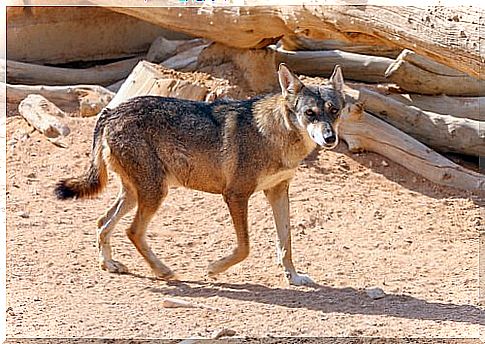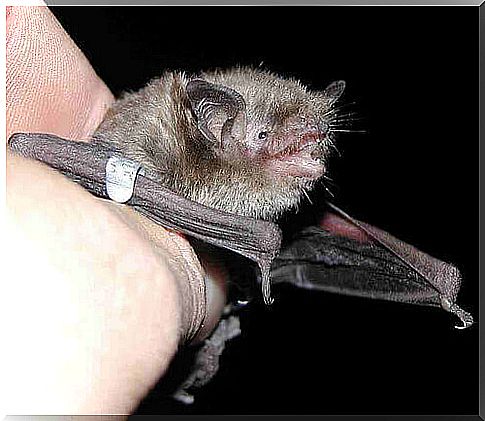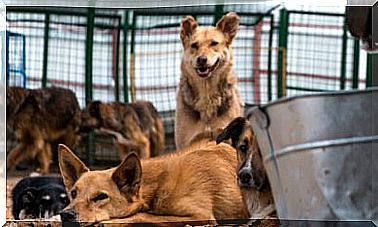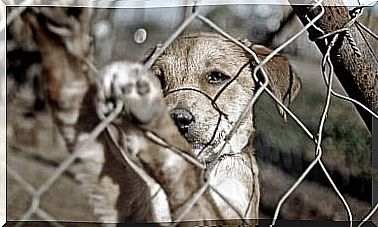Anger In Wild Animals: A Dangerous Zoonosis

The rabies in wild animals is a viral disease considered the most deadly zoonoses in the world. In fact, it causes more than 60,000 deaths every year. It demonstrates that people’s health is closely related to that of animals and wildlife.
This dangerous pathology is transmitted to humans by pets, since they live in contact with people. It is estimated that 99% of human transmission cases are due to dog bites. That is why the main way to protect yourself from this condition is rabies prevention and treatment campaigns in dogs.
However, this disease affects many wild animals. They act as hosts and contribute enormously to the infection. That is why knowing the implications of rabies in wild animals is vital in order to eradicate it.

Anger: a bit of history
The presence of this disease has been documented since ancient Greece. Even Aristotle talks about it, perfectly describing the symptoms of anger. Even then, the well-known philosopher linked his infection to dog bites. Indeed, anger is partly the origin of the werewolf myth, because some of its symptoms in humans coincide with werewolf stories.
Later, the virus would spread throughout America because of the first explorers, who brought with them, also, already sick animals to the New Continent and which triggered the dangerous contagion. Humanity had no cure available until the successful discovery of Louis Pasteur, which would produce the relevant vaccine and save the life of the young Joseph Meister, in 1885. Joseph was the first human being to be successfully vaccinated.
Rabies in wild animals: the epidemiological cycles of rabies
The urban cycle is the one that causes the greatest danger to man. Let’s talk about the dog bites to people, already mentioned, which are joined by other pets such as the cat, ferret or raccoon.

However, the sylvan cycle is equally important, since it expands possible contagion of the disease to populations of wild animals, which infect dogs. Its control is much more complicated, since it is unthinkable to vaccinate thousands of living beings in their wild habitat .
Rabies in wild animals
In Europe, wild animal rabies is mainly driven by the red fox, but it has been possible to reduce the prevalence of the disease through oral vaccination. In the forests, food “seasoned” with dressing is left, which acts like a vaccine. Despite these measures, the plight of foxes is a real threat in Eastern Europe.

Rabies affects other European animals, such as the wolf. Although these animals’ attacks on people are virtually non-existent, the virus produces changes in the behavior of wild animals and makes them less fearful and more aggressive.
In the United States, one of the animals most affected by the virus is the raccoon. It is responsible for nearly 40% of rabies cases in the east of the country. Other animals play an important role, such as jackals, skunks, badgers, and other wild carnivores.
We have already talked about some animals that can transmit this disease. Furthermore, the popularity of exotic animals, which are bought on the black market and then abandoned, now brings the urban and sylvan cycles closer and closer.
The irresponsible ownership of exotic animals has become another factor to be taken into account, since, even in Italy, these invasive specimens are more likely to bite people, than others.

Bats are of great importance in the transmission of the disease. Some strains of the virus are unique to this species, which can transmit rabies to other animals. They are considered a real threat. Fortunately, however, these flying placental mammals very rarely approach people. In the past, miners were often subject to anger but, today, we are a long way from that emergency.
Anger and unitary health
Rabies is a disease that helps us understand the concept of unitary health and the importance of veterinary medicine in protecting public welfare. Only thanks to a serious and effective intervention is it possible to reduce the incidence of epidemiological cycles of rabies.
Furthermore, a possible reduction in cases in Europe is unthinkable without the vaccination campaigns carried out by these professionals, across the continent. Today, fortunately, many countries have almost completely eradicated this dangerous zoonosis . A clear demonstration of the importance of taking timely measures to prevent the urban and sylvan cycle and to maintain a healthy and safe coexistence with our animal friends.









